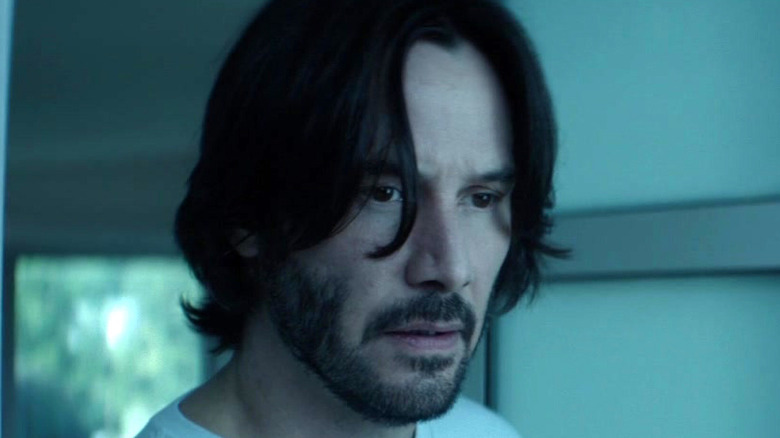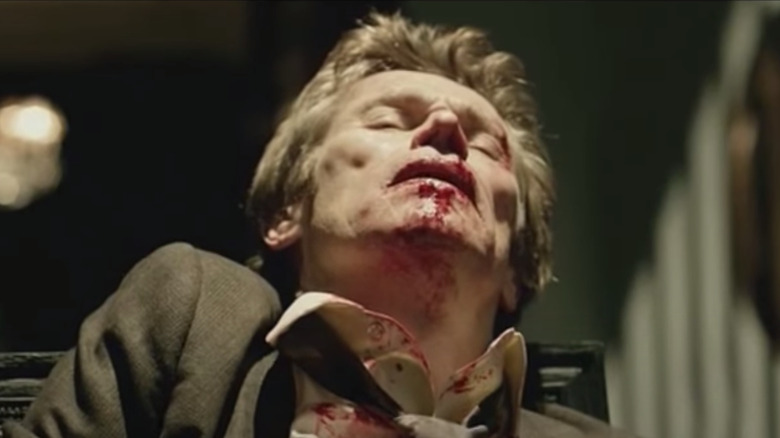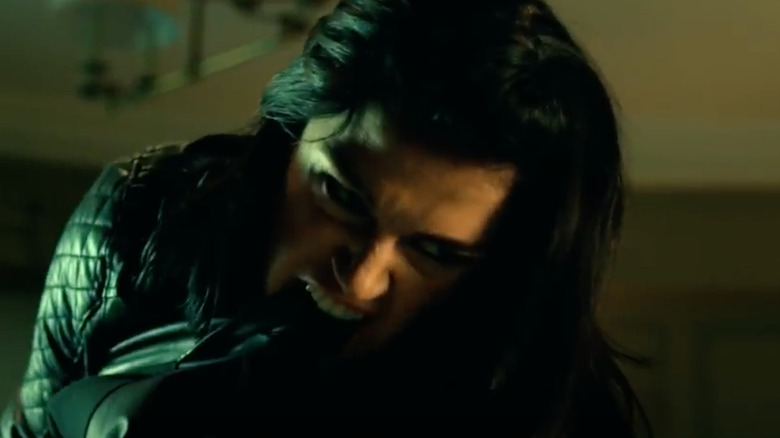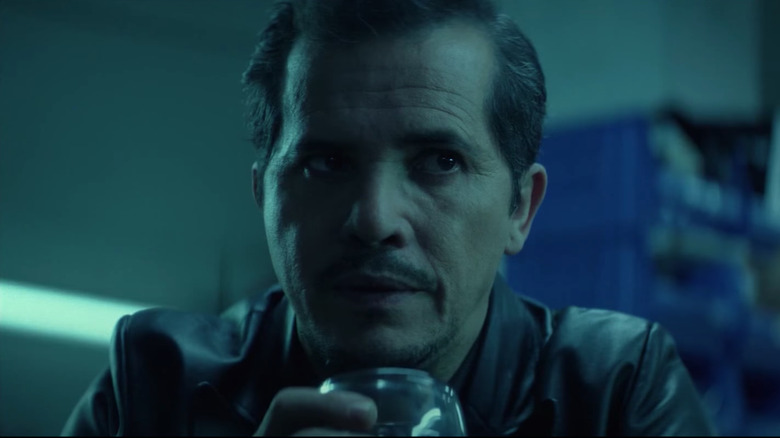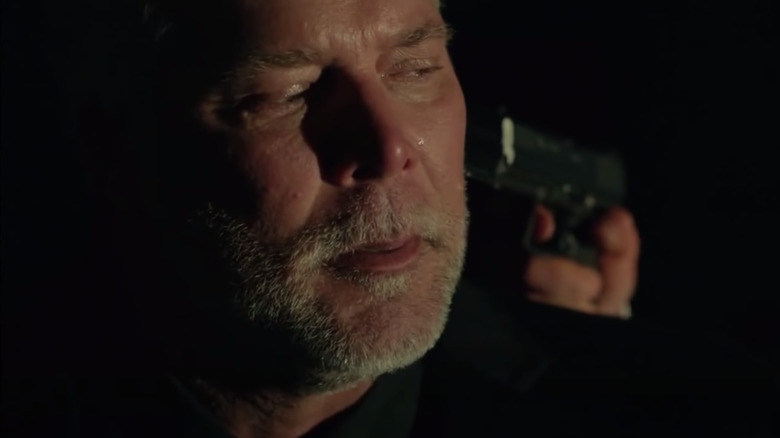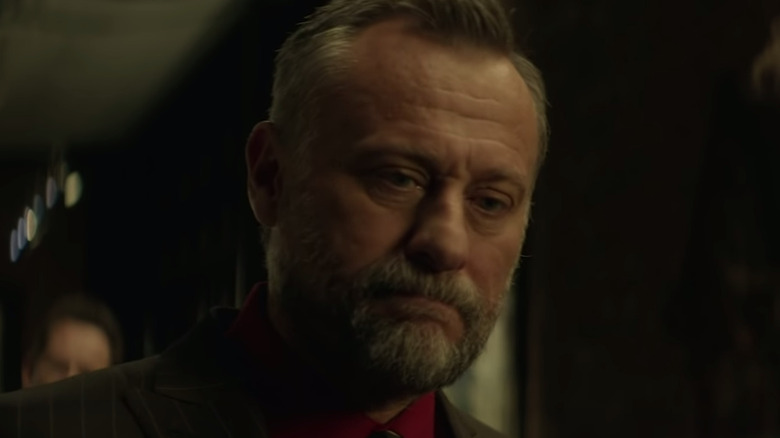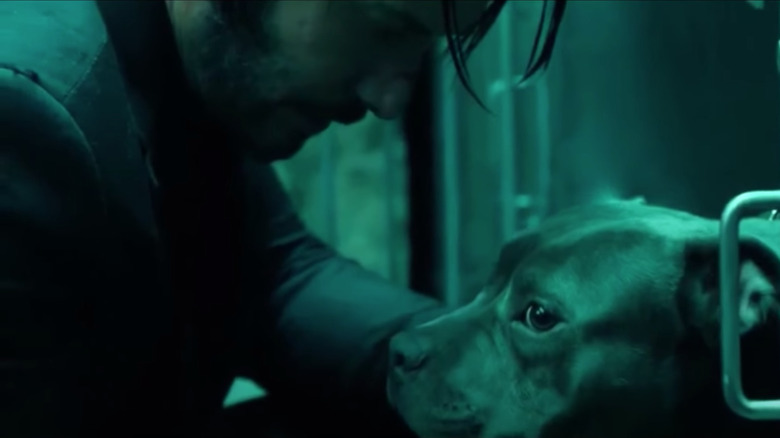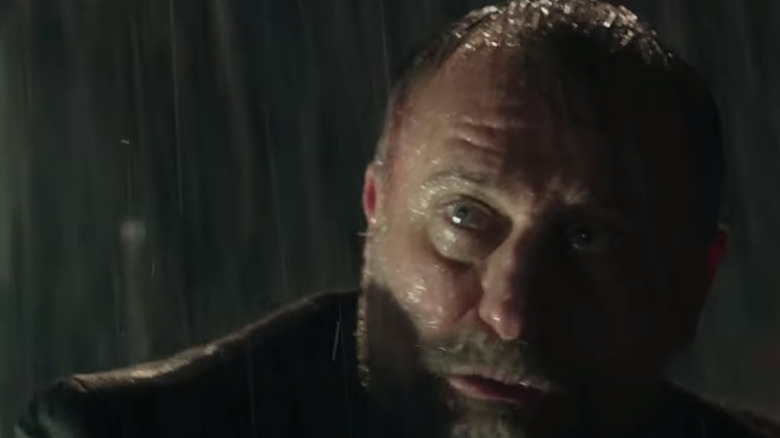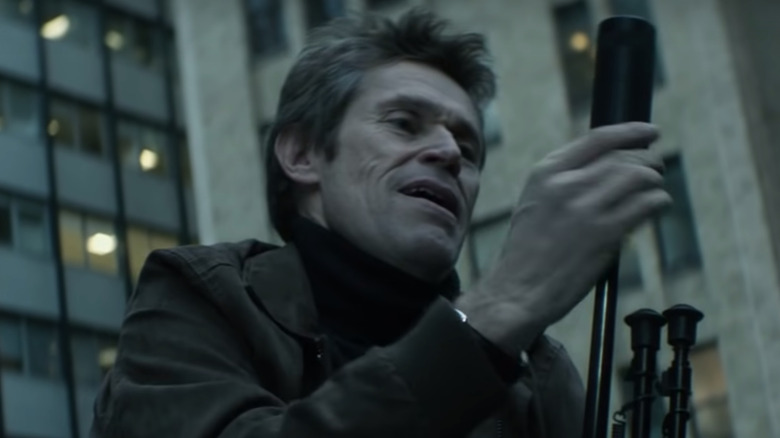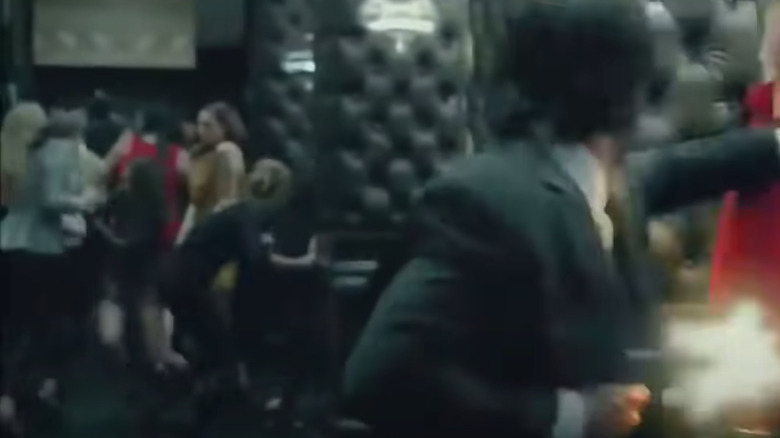Things You Forgot Happened In John Wick
It's easy to forget the humble origins of the first "John Wick" film, now that the series has ballooned to massive proportions. Each subsequent movie has grown larger and more successful in terms of reach and box office return. "John Wick: Chapter 2" more than doubled the first film's worldwide gross, while "John Wick: Chapter 3" nearly doubled that installment's return (via Box Office Mojo).
Released in 2014 with little fanfare, the first "John Wick" movie had the potential to be lost in the shuffle of similar action films. Luckily, positive buzz and strong word-of-mouth spread the film to wider audiences. A committed physical performance from Keanu Reeves, excellent world-building, and top-notch action sequences all help "John Wick" stand out. While the original film is much smaller in budget and scope than its sequels, it's still packed with gunfights and rich lore. What things have you forgotten about the first film? We're here to help you find out with this list of little-known details, occurrences, and relationships from the first "John Wick" movie.
John doesn't kill Viggo because of the dog
If "John Wick" has a singular narrative hook, it's that its bloody revenge mission is spurred by the murder of a puppy. Revenge is often a motive in violent action films, but making the victim a poor, defenseless pet puts a new spin on the trope, and succeeds in getting audiences invested in John's desire for vengeance. What you may have forgotten, however, is that the puppy no longer drives John's need for revenge by the end of the film. Iosef Tarasov leads the home assault that ends with John Wick's car being stolen and his dog being killed, but Iosef isn't the film's final adversary. John successfully kills Iosef partway through the movie, and seems ready to call it quits on his path of bloody destruction ... until he's given a new need for vengeance.
Iosef's father Viggo is the top dog of the criminal empire John finds himself up against. John used to work for Viggo, and the two share a mutual respect and understanding — Viggo even goes as far as to discipline his son for acting against John. After his son is killed, Viggo takes his anger out on Marcus, John's old mentor. Rather than the death of the puppy, it is the murder of Marcus that puts John Wick on a second collision course with the Tarasov family.
Excommunication can be direct
At the end of "John Wick: Chapter 2," John cannot hold back his anger and kills Santino D'Antonio on the grounds of the Continental. For violating this sacred rule, John is excommunicated in the film's closing minutes, and spends the entire third film dealing with the ramifications. Before the excommunication goes into effect, Winston gives John a warning and a one-hour head start. You might assume this is standard. But in fact, if we look back to the first film, we know that this is not a liberty Winston affords to everyone who violates the Continental's rules.
Conducting business on Continental grounds is the same sin that the assassin Ms. Perkins perpetrates in the first film. Rather than getting a respectful heads-up, however, Ms. Perkins is executed in cold blood by four gunmen. Excommunication can be far more direct than it is for John. The one-hour head start gesture speaks to his formidable reputation and the preferential treatment Winston provides for him.
Aurelio assaults Iosef
Aurelio is an auto mechanic who lends his services to the Continental and runs a chop shop for the Tarasov crime family. When Iosef brings John Wick's stolen car into the shop, Aurelio recognizes it immediately. He refuses to work on the vehicle and attempts to throw Iosef and his buddies out. When they won't leave, Aurelio punches Iosef in the mouth.
Normally, someone wouldn't be able to assault a mob boss' son and live to tell the tale, but John Wick's reputation puts the events in a different context. Viggo understands Aurelio's actions when the situation is explained to him, and takes Aurelio's side over his own son's. Aurelio makes a brief appearance near the start of "John Wick: Chapter 2" as well. Though he doesn't return in "Chapter 3," the character is still alive and could conceivably show up in subsequent sequels or even in "The Continental" spin-off series.
John lets adversaries live
Though John Wick is an unstoppable killing machine, he isn't entirely without mercy. Yes, he kills hundreds of people over the course of the series, but he also lets quite a few people live. In the first film alone, John lets several people go unscathed. Before infiltrating the Red Circle nightclub, John has a brief exchange with the door guard, Francis. It's clear the two know each other, and John tells him to take the night off, rather than swiftly murdering him. John also lets Ms. Perkins live after she tries to assassinate him.
John even lets Iosef go — a decision he comes to regret. John gets Iosef in his sights from across the room in the Red Circle, but opts to move in, to finish him off up close. He's interrupted, and Iosef slips away. This is a mistake he doesn't make twice. The next time he has a chance to kill Iosef, he takes it before Iosef has even finished speaking.
John's merciful side carries over into the sequels. In "John Wick: Chapter 2," John lets Viggo's brother live after fighting his way through the factory to retrieve his stolen car. He leaves his blade in Cassian's heart, telling him he'll live if he gets to a hospital. In "John Wick: Chapter 3," he lets both of Zero's main Shinobi fighters live. His gracious tendencies even get him into trouble in the end when Winston double-crosses him.
John's impossible task is alluded to
When John falls in love with Helen, a civilian, he needs to leave his career as an international super-assassin behind. The trouble is, a life of violent crime isn't something you can walk away from so easily.
Since the High Table isn't introduced in the first film, it seems as though Viggo is John Wick's direct employer, and the man who decides whether or not he can exit the fold. Viggo can't reasonably allow John to walk away, so he devises a task that's meant to be impossible. If John pulls it off, he'll have his freedom. Viggo is certain John will die carrying it out, but he doesn't. The impossible task proves to be possible for the one and only John Wick, and his safe retirement is secured.
Not many details are known about the impossible task. It has been alluded to a handful of times throughout the series, but never showcased in any detail. Perhaps this suicide mission will eventually be revealed in the form of a sequel flashback, a prequel, or in "The Continental" spin-off series.
The second dog is due to be euthanized
By the end of the first "John Wick" movie, John is gravely wounded and running on fumes. Desperate, he breaks into a dog pound to clean the knife wound in his stomach and staple it shut. While there, John frees one of the dogs from the kennel and takes the poor pup with him. If you look closely at the clipboard attached to the front of the dog's crate, you can see he's due to be euthanized. If John had not stepped in, this second canine companion would have shared the first dog's fate.
This dog lacks a name, and returns in both sequels. He miraculously survives the house explosion at the start of "John Wick: Chapter 2" and accompanies John on his long walk back to the city. At that point, the dog is remanded into Charon's care, where he remains for much of "John Wick: Chapter 2" and "John Wick: Chapter 3."
John has a number of bounties put on his head
When John is excommunicated at the end of "John Wick: Chapter 2," the punishment manifests in a couple of ways. He is barred from the Continental, no longer has access to any of their services, and, most dangerously of all, has a $14 million assassination contract put out on him. Though this huge price tag is noteworthy, it's definitely not the first time John Wick has had a bounty put on his head.
Back in the first film, Viggo puts a $2 million bounty on John after he learns that the stone-cold killer is going after Iosef. This bounty certainly motivates a few people to take shots at John — including Ms. Perkins, who is offered $4 million to violate Continental rules — but none of them are successful. Viggo even offers the contract directly to Marcus, John's old mentor. Marcus seems to begrudgingly accept it, but turns out to be on John's side through and through.
John's mysterious mentor
Marcus is majorly involved in the plot of the first "John Wick" film. Even so, you may have forgotten about him and his unique relationship to John after watching the sequels. There is no mention whatsoever of Marcus in "John Wick: Chapter 2" or "John Wick: Chapter 3." This absence is a little bit conspicuous, given how significant he is in the first film. Marcus' death is so potent, it's what drives John to kill Viggo.
Marcus can best be described as a mentor to John, as an older hitman who showed him the ropes. There is a clear affinity and loyalty between the two men — Marcus even attends Helen's funeral. But "John Wick: Chapter 3" reveals that John was trained in a Russian orphanage/ballet academy/assassin school. It's unclear how Marcus fits into this equation, exactly. Perhaps he was an instructor within that academy? Perhaps he and John crossed paths later in life? Perhaps the series' world-building was still being worked out during the first film's development? Whatever the reason, these tantalizing details leave fans with questions about Marcus' place in John's life.
The public panics during the shootout
When John goes on his killing spree through the Red Circle nightclub, the partying civilians panic and run for cover. On its own, this seems perfectly natural. After viewing the sequels, however, the crowd's reaction sticks out. Throughout "John Wick: Chapter 2" and "John Wick: Chapter 3," John and other assassin frequently conduct lethal business right out in the open. There, the public's reaction is far more subdued. Whether it's a stabbing in Grand Central Station or a shootout in the middle of a subway platform, people never seem to pay much mind to the violent happenings around them.
In the first "John Wick," however, the crowd does react in terror when faced with the threat of violent death. It seems likely that this difference in reaction comes from the franchise's expanded world-building. "John Wick: Chapter 2" introduces the Bowery King and his army of faux-homeless agents, who populate New York City's streets. This film also significantly ups the number of assassins operating in the city and around the world. At times, it seems as though almost everyone in the "John Wick" world has some connection to the assassination business. But this is not apparent in the first film, where people reasonably flee sudden, bloody mayhem.
